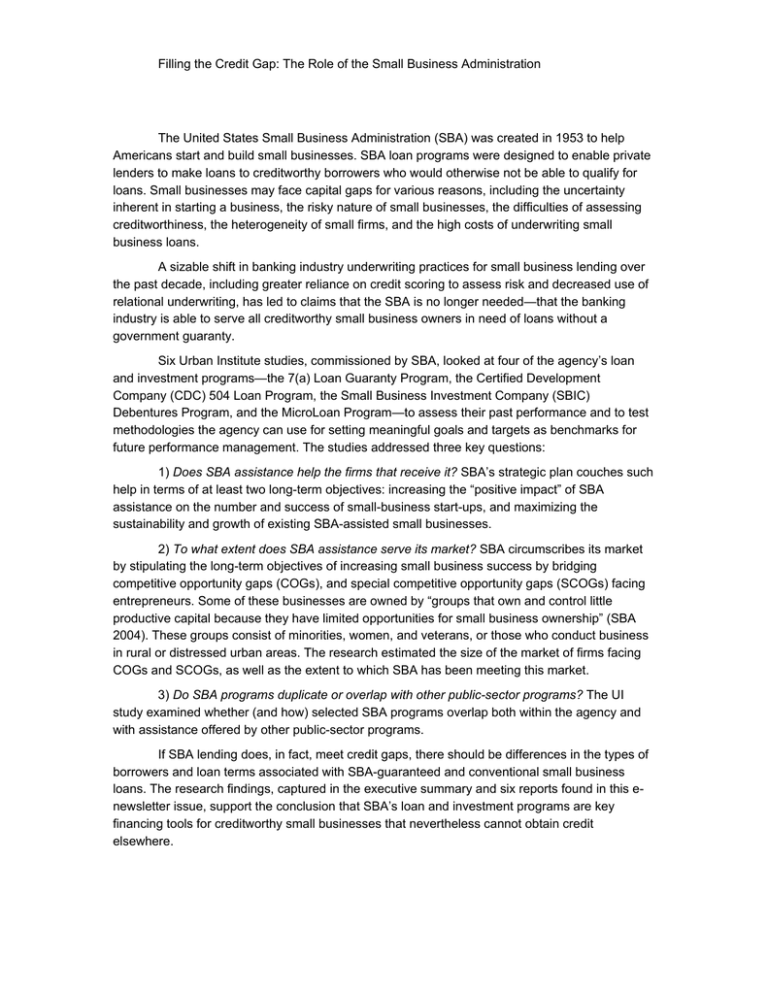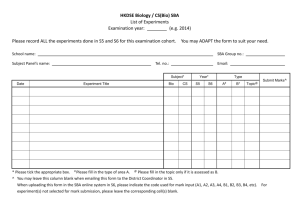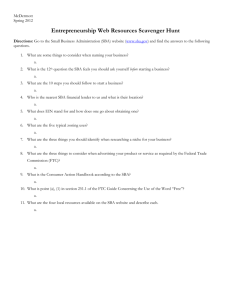Filling the Credit Gap: The Role of the Small Business... The United States Small Business Administration (SBA) was created in...
advertisement

Filling the Credit Gap: The Role of the Small Business Administration The United States Small Business Administration (SBA) was created in 1953 to help Americans start and build small businesses. SBA loan programs were designed to enable private lenders to make loans to creditworthy borrowers who would otherwise not be able to qualify for loans. Small businesses may face capital gaps for various reasons, including the uncertainty inherent in starting a business, the risky nature of small businesses, the difficulties of assessing creditworthiness, the heterogeneity of small firms, and the high costs of underwriting small business loans. A sizable shift in banking industry underwriting practices for small business lending over the past decade, including greater reliance on credit scoring to assess risk and decreased use of relational underwriting, has led to claims that the SBA is no longer needed—that the banking industry is able to serve all creditworthy small business owners in need of loans without a government guaranty. Six Urban Institute studies, commissioned by SBA, looked at four of the agency’s loan and investment programs—the 7(a) Loan Guaranty Program, the Certified Development Company (CDC) 504 Loan Program, the Small Business Investment Company (SBIC) Debentures Program, and the MicroLoan Program—to assess their past performance and to test methodologies the agency can use for setting meaningful goals and targets as benchmarks for future performance management. The studies addressed three key questions: 1) Does SBA assistance help the firms that receive it? SBA’s strategic plan couches such help in terms of at least two long-term objectives: increasing the “positive impact” of SBA assistance on the number and success of small-business start-ups, and maximizing the sustainability and growth of existing SBA-assisted small businesses. 2) To what extent does SBA assistance serve its market? SBA circumscribes its market by stipulating the long-term objectives of increasing small business success by bridging competitive opportunity gaps (COGs), and special competitive opportunity gaps (SCOGs) facing entrepreneurs. Some of these businesses are owned by “groups that own and control little productive capital because they have limited opportunities for small business ownership” (SBA 2004). These groups consist of minorities, women, and veterans, or those who conduct business in rural or distressed urban areas. The research estimated the size of the market of firms facing COGs and SCOGs, as well as the extent to which SBA has been meeting this market. 3) Do SBA programs duplicate or overlap with other public-sector programs? The UI study examined whether (and how) selected SBA programs overlap both within the agency and with assistance offered by other public-sector programs. If SBA lending does, in fact, meet credit gaps, there should be differences in the types of borrowers and loan terms associated with SBA-guaranteed and conventional small business loans. The research findings, captured in the executive summary and six reports found in this enewsletter issue, support the conclusion that SBA’s loan and investment programs are key financing tools for creditworthy small businesses that nevertheless cannot obtain credit elsewhere.



